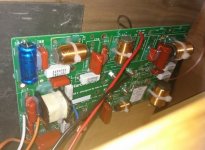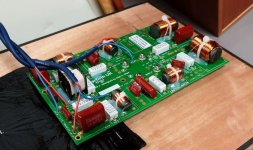Hello,
I'm admittedly a total novice with this sort of thing, so go easy...
I've got a pair of harbeth speakers that belonged to my father that I'd potentially like to upgrade, if feasible. From what I understand, the newer version of the speaker is more contemporary sounding and probably more to my taste and I'd like to hang on to them. From what I could read online, the bulk of the change is from the crossover, there's some extra dampening too around port.
I've found pictures online of the old and new crossover. I'd likely get someone with the knowhow and capabilities to do the work, if at all feasible. The PCB seems to be the exact same.
So, can this be done? Or is it a silly proposition?
Many Thanks for any input
Older Version
DSC 0750 — imgbb.com
New Version
Harbeth — imgbb.com
I'm admittedly a total novice with this sort of thing, so go easy...
I've got a pair of harbeth speakers that belonged to my father that I'd potentially like to upgrade, if feasible. From what I understand, the newer version of the speaker is more contemporary sounding and probably more to my taste and I'd like to hang on to them. From what I could read online, the bulk of the change is from the crossover, there's some extra dampening too around port.
I've found pictures online of the old and new crossover. I'd likely get someone with the knowhow and capabilities to do the work, if at all feasible. The PCB seems to be the exact same.
So, can this be done? Or is it a silly proposition?
Many Thanks for any input
Older Version
DSC 0750 — imgbb.com
New Version
Harbeth — imgbb.com
Hi,
If you know the part changes, you could apply them directly.
Otherwise, making any tonal changes to it would be difficult to do right without a thorough analysis. Meaning individual driver measurements, and crossover simulation.
However, You may have some fun inexpensively by replacing some of the caps that go to the tweeter and midrange. Depends on how well you can trace the schematic.
Best,
E
If you know the part changes, you could apply them directly.
Otherwise, making any tonal changes to it would be difficult to do right without a thorough analysis. Meaning individual driver measurements, and crossover simulation.
However, You may have some fun inexpensively by replacing some of the caps that go to the tweeter and midrange. Depends on how well you can trace the schematic.
Best,
E
Fools rush in where Angels fear to tread! 😀
Don't take that the wrong way. We all started somewhere. This is actually very difficult.
You don't tell us what model this Harbeth speaker is. I guess a 3 way. The MKII might well have different drivers from the MkI. Hence one reason for a new crossover.
Most three ways look like this Troels Gravesen SEAS 3-way classic:

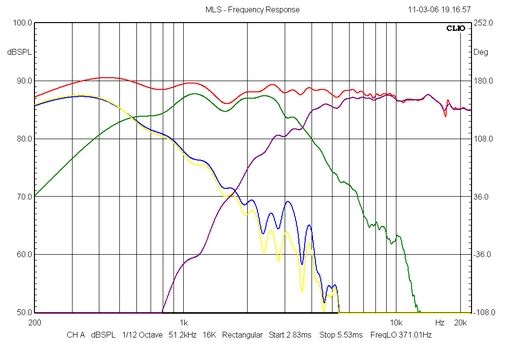
I counted SIX coils, so clearly a bit more going on with Harbeth.
Harbeth tend to use polycones and metal SEAS tweeters in a BBC style of cabinet. I'd think even early versions of Harbeth pursue the flat response of monitor loudspeakers. TBH, I'd leave well alone. Enjoy a quality speaker, maybe even a classic. I have no idea what a contemporary sound is. There is only accurate sound. 😀
For all that, as a speaker ages some faults appear. Any probs?
Don't take that the wrong way. We all started somewhere. This is actually very difficult.
You don't tell us what model this Harbeth speaker is. I guess a 3 way. The MKII might well have different drivers from the MkI. Hence one reason for a new crossover.
Most three ways look like this Troels Gravesen SEAS 3-way classic:
I counted SIX coils, so clearly a bit more going on with Harbeth.
Harbeth tend to use polycones and metal SEAS tweeters in a BBC style of cabinet. I'd think even early versions of Harbeth pursue the flat response of monitor loudspeakers. TBH, I'd leave well alone. Enjoy a quality speaker, maybe even a classic. I have no idea what a contemporary sound is. There is only accurate sound. 😀
For all that, as a speaker ages some faults appear. Any probs?
Attachments
Last edited:
Thanks for the input.
@system7
The model is the SHL5, the newer one being the SHL5 plus. My thinking was seeing as the PCB were the same (both have the same version number indicated on them), component values will maybe be printed on board and then it's a matter of getting them and copying the new crossover. Indeed, I thought many were the same but in a different layout, but like I said, I'm totally new to this. The fact it isn't that straightforward doesn't come as a surprise! Some more reading seems to say that a lot the components are custome values?
The driver and both tweeters are the same. There is apparently a new formulation used on the driver surround due to some manufacturing requirement, however their response is apparently the same. So, it seemed to me the crossover and dampening was what needed to be changed.
As for the sound change, apparently bass is tauter and speaker placement is easier as a result, also presentation was said to be ever so slightly more hifi (I'm guessing less monitor-like maybe here).
@system7
The model is the SHL5, the newer one being the SHL5 plus. My thinking was seeing as the PCB were the same (both have the same version number indicated on them), component values will maybe be printed on board and then it's a matter of getting them and copying the new crossover. Indeed, I thought many were the same but in a different layout, but like I said, I'm totally new to this. The fact it isn't that straightforward doesn't come as a surprise! Some more reading seems to say that a lot the components are custome values?
The driver and both tweeters are the same. There is apparently a new formulation used on the driver surround due to some manufacturing requirement, however their response is apparently the same. So, it seemed to me the crossover and dampening was what needed to be changed.
As for the sound change, apparently bass is tauter and speaker placement is easier as a result, also presentation was said to be ever so slightly more hifi (I'm guessing less monitor-like maybe here).
I notice I never got back this thread... must have been busy at work... 😱
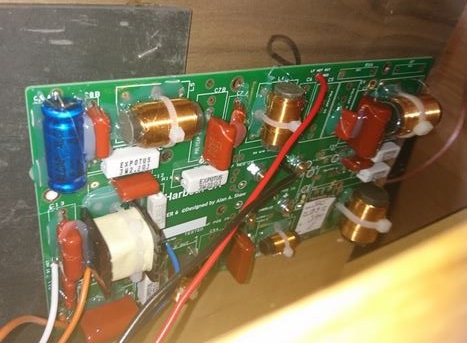
Obvious potential fix here is replacing the wet blue electrolytic with a new one to fix potential ageing.
Mundorf Electrolytic ECap Capacitors
Also loosen and retighten the 4 nuts on the speaker connection for unoxidised metal.
I don't know if Harbeth use crimp connectors to the speakers, but the wires can oxidise too. You could strip them back to fresh metal and recrimp, possibly with the wires doubled back for more contact. A trick a pro electrician taught me.
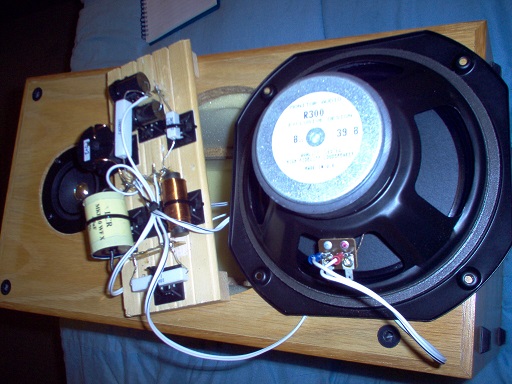
Old bass units can sag with age, and rub voicecoil. You can test for this by gently pushing the cone in and listening for scraping. Rotatimg the driver 90 degrees can help.
Lastly, a lot of SEAS tweeters use brown ferrofluid in the magnet gap, which can dry out and go solid. A Visual inspection can spot this. Obtainable at Blue Aran for fresh.
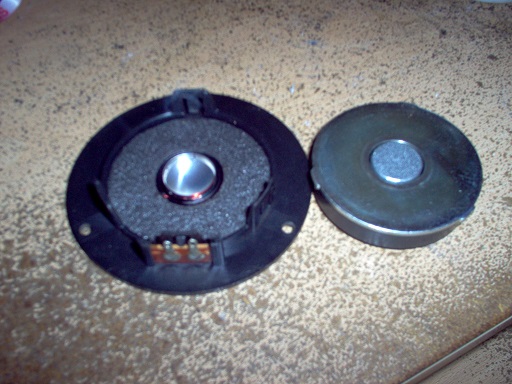
Expensive as they are, Harbeth are designed for a lifetime, so Alan Shaw feels they are cheap in the long run! 😎
Harbeth Loudspeakers Factory Visit - YouTube
Harbeth на Munich High End 2018 - интервью с Alan Shaw. - Soundex.ru - YouTube
Things of great loveliness to my eyes.
Obvious potential fix here is replacing the wet blue electrolytic with a new one to fix potential ageing.
Mundorf Electrolytic ECap Capacitors
Also loosen and retighten the 4 nuts on the speaker connection for unoxidised metal.
I don't know if Harbeth use crimp connectors to the speakers, but the wires can oxidise too. You could strip them back to fresh metal and recrimp, possibly with the wires doubled back for more contact. A trick a pro electrician taught me.
Old bass units can sag with age, and rub voicecoil. You can test for this by gently pushing the cone in and listening for scraping. Rotatimg the driver 90 degrees can help.
Lastly, a lot of SEAS tweeters use brown ferrofluid in the magnet gap, which can dry out and go solid. A Visual inspection can spot this. Obtainable at Blue Aran for fresh.
Expensive as they are, Harbeth are designed for a lifetime, so Alan Shaw feels they are cheap in the long run! 😎
Harbeth Loudspeakers Factory Visit - YouTube
Harbeth на Munich High End 2018 - интервью с Alan Shaw. - Soundex.ru - YouTube
Things of great loveliness to my eyes.
The old and new harbeth HL5 do differ very little from each other. I would also not bother to change it. Both versions are slightly coloured to the Harbeth sound and Allan Shaw did model the new version response to the sonic signature of the old one he said in an interview.
Those crossovers, altough build with generic parts, are very studied and each speaker is measured and adapted so i don't see the reason to change it if there is no broken part. But if you want neutral speakers, Harbeth is not a good option i'm affraid, as they are deliberate coloured.
Did you talk about this on the harbeth forum? There most users gather and discuss the things about this speakers: The Harbeth User Group: The objectivist's journey to the most realistic sound
Those crossovers, altough build with generic parts, are very studied and each speaker is measured and adapted so i don't see the reason to change it if there is no broken part. But if you want neutral speakers, Harbeth is not a good option i'm affraid, as they are deliberate coloured.
Did you talk about this on the harbeth forum? There most users gather and discuss the things about this speakers: The Harbeth User Group: The objectivist's journey to the most realistic sound
Why would we need some sort of balanced view here?
For disinformation, certainly Facebook and Youtube win the coconuts.
Yuri claims Radial was invented by Volt. Curious that Volts product is a cooling technology, whereas Harbeth's Radial is a cone material. Claims Alan Shaw has done nothing since buying the company from Dudley Harwood. I beg to differ.
Volt Loudspeakers | Radial Technology
Could it be that Yuri Sokak is actually promoting his simplistic designs?
HMH Elektro Akustik
To claim that the SEAS A26 is crossoverless ignores the huge 3.8mH voicecoil inductance that gives it good natural rolloff and extremely high impedance at high frequency. Little more than a rehash of the SEAS A26 kit:
SEAS A26 Kit
He also promotes the SEAS DXT as good with a single capacitor. Well, yes it is, but still could benefit from Fs correction:
H1499-06 27TBCD/GB-DXT
Opinion and bias masquerading as facts.
For disinformation, certainly Facebook and Youtube win the coconuts.
Yuri claims Radial was invented by Volt. Curious that Volts product is a cooling technology, whereas Harbeth's Radial is a cone material. Claims Alan Shaw has done nothing since buying the company from Dudley Harwood. I beg to differ.
Volt Loudspeakers | Radial Technology
Could it be that Yuri Sokak is actually promoting his simplistic designs?
HMH Elektro Akustik
To claim that the SEAS A26 is crossoverless ignores the huge 3.8mH voicecoil inductance that gives it good natural rolloff and extremely high impedance at high frequency. Little more than a rehash of the SEAS A26 kit:
SEAS A26 Kit
He also promotes the SEAS DXT as good with a single capacitor. Well, yes it is, but still could benefit from Fs correction:
H1499-06 27TBCD/GB-DXT
Opinion and bias masquerading as facts.
- Home
- Loudspeakers
- Multi-Way
- Crossover Upgrade Advice
